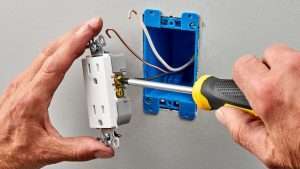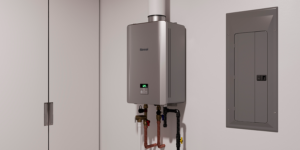Electrical Outlets
Different Types

Electrical Outlets:
Did you know that there are different types of electrical outlets that can be installed in your home? You have most likely noticed that there are different characteristics of the electrical outlets in your home. In this article we will be discussing the different types of electrical outlets you can have. Choosing and installing the right electrical outlet for the space’s needs can keep you safe from electrical hazards and make your home more energy-efficient.
- The most common in older homes and comes in two different versions are the two-pronged outlets and the three-pronged version. These are best used for light home use with appliances that have minimum voltage and amperage requirements.
- Next, you have the 20a, 125-volt outlets. These outlets are for larger electrical power draws than the two and three-prong outlets. To support more modern appliances local building municipals have started requiring these outlets for some appliances such as the kitchen outlets. You can identify these by the 15A version for a small horizontal slot alongside the vertical ground slot.
- Next, we have the 20A, 250-volt outlets. These outlets are for large appliances like air conditioning components. These outlets need to have a proper circuit in place. 250-volt outlets need a double-pole circuit breaker installed in your main. You will need an electrician for the installation if not already installed.
- Tamper-resistant receptacles – these are starting to be installed more frequently in newly constructed homes as local building codes in most places have now made it mandatory to have tamper-resistant receptacles installed. These outlets utilize a built-in barrier to prevent the entry of foreign objects.
- GFCI Outlets – These are some of the most discussed outlets from home inspections. They are Ground Fault Circuit Interrupter (GFCI) and are found in the home near places that have water. These would be places like the bathroom, kitchens, and basements. These outlets track the flow of current and trip (or cut off power) when it senses a spike or leaps in the current.
- AFCI Outlets – These outlets are found in bedrooms and are now mandatory in most areas. Some electrical faults create heat through arcing. Arcing happens in loose contact points in your electrical system where the electricity jumps between connections. The telltale signs are usually sparks or a buzzing sound. This can create an extraordinary amount of heat. Overheating appliances, hammering a nail through a wire by accident, or rodents chewing on wires can all trigger this risk. When arcing occurs, the Arc Fault Circuit Interrupter (AFCI) outlets detect it, and the integrated breaker deactivates the outlet.
Additional Electrical Outlets
Above are the most frequently seen electrical outlets. Some others are switched outlets, USB outlets, and smart outlets.
I hope this information has been helpful related to the different electrical outlets. If you have additional questions and want to get in contact with GGR Home Inspections please send us a note, text, or call.






Pingback: The Dangers of Single Strand Aluminum Wire in Your Home – GGR Home Inspections
Pingback: Home Maintenance Is Importance – GGR Home Inspections